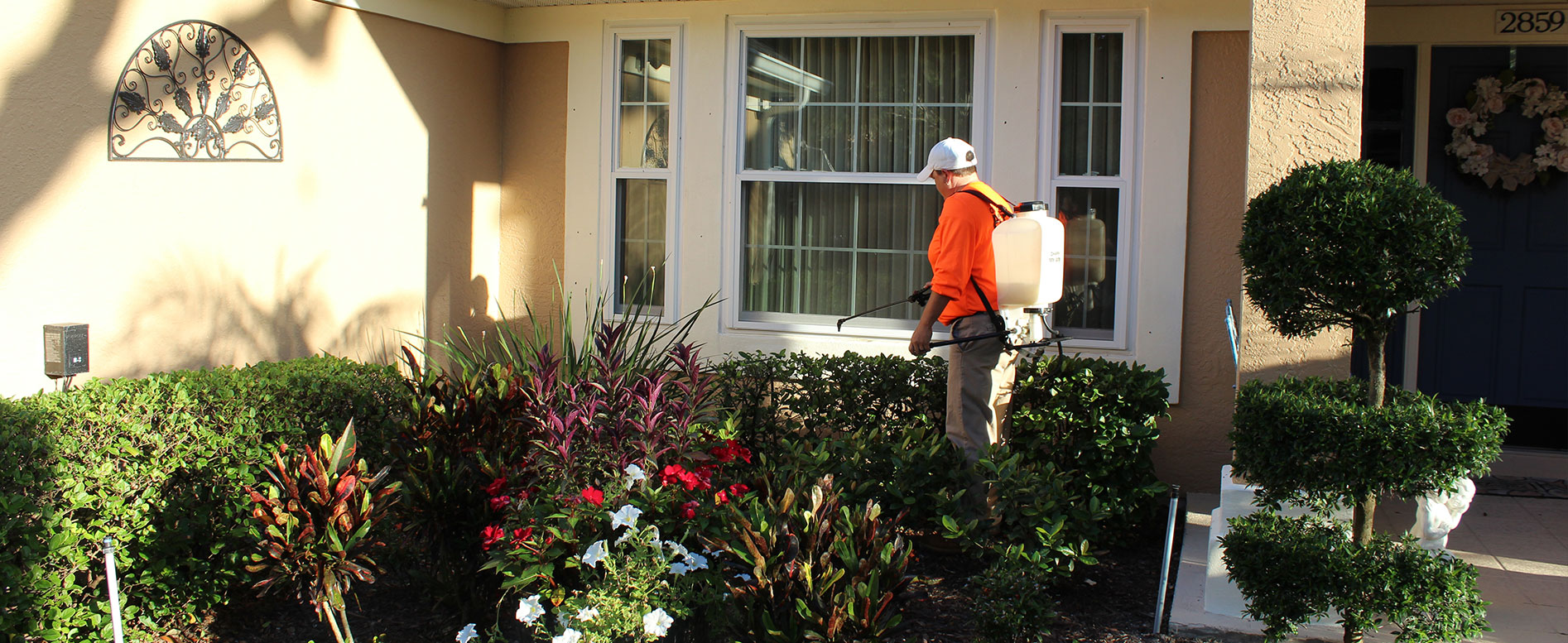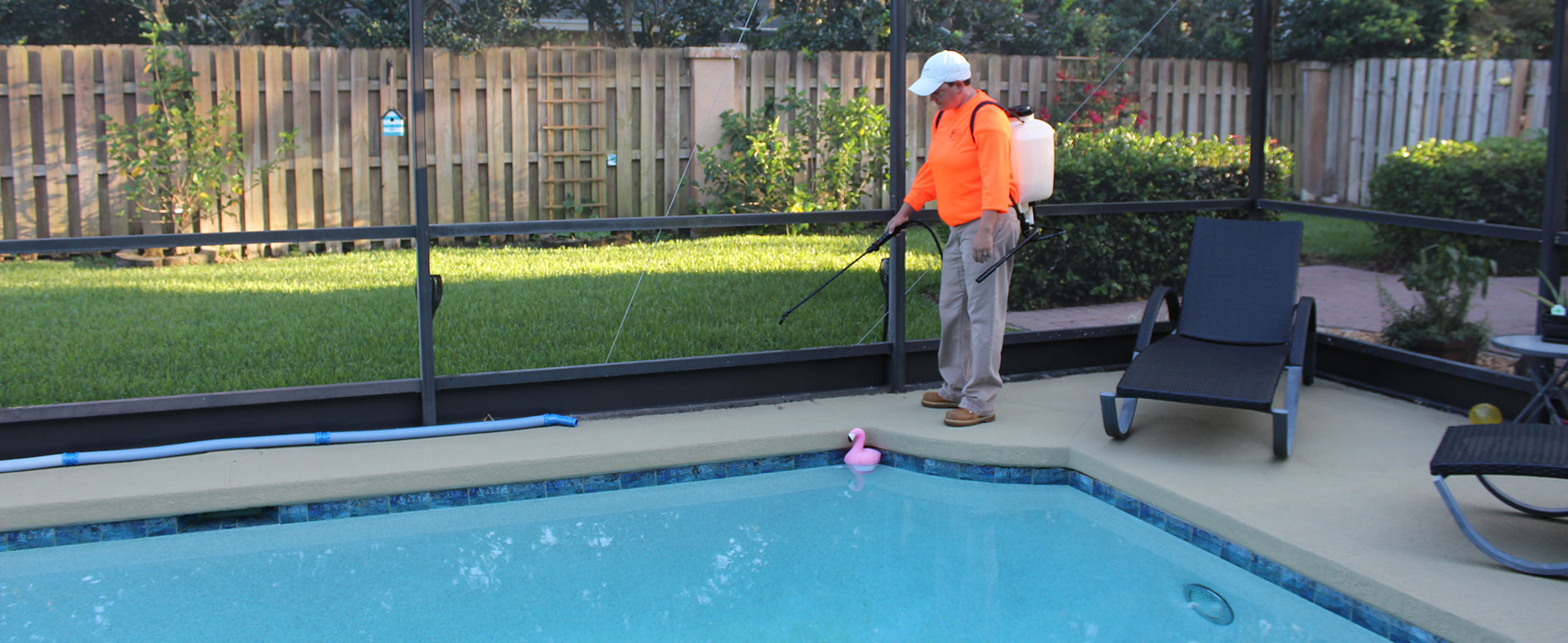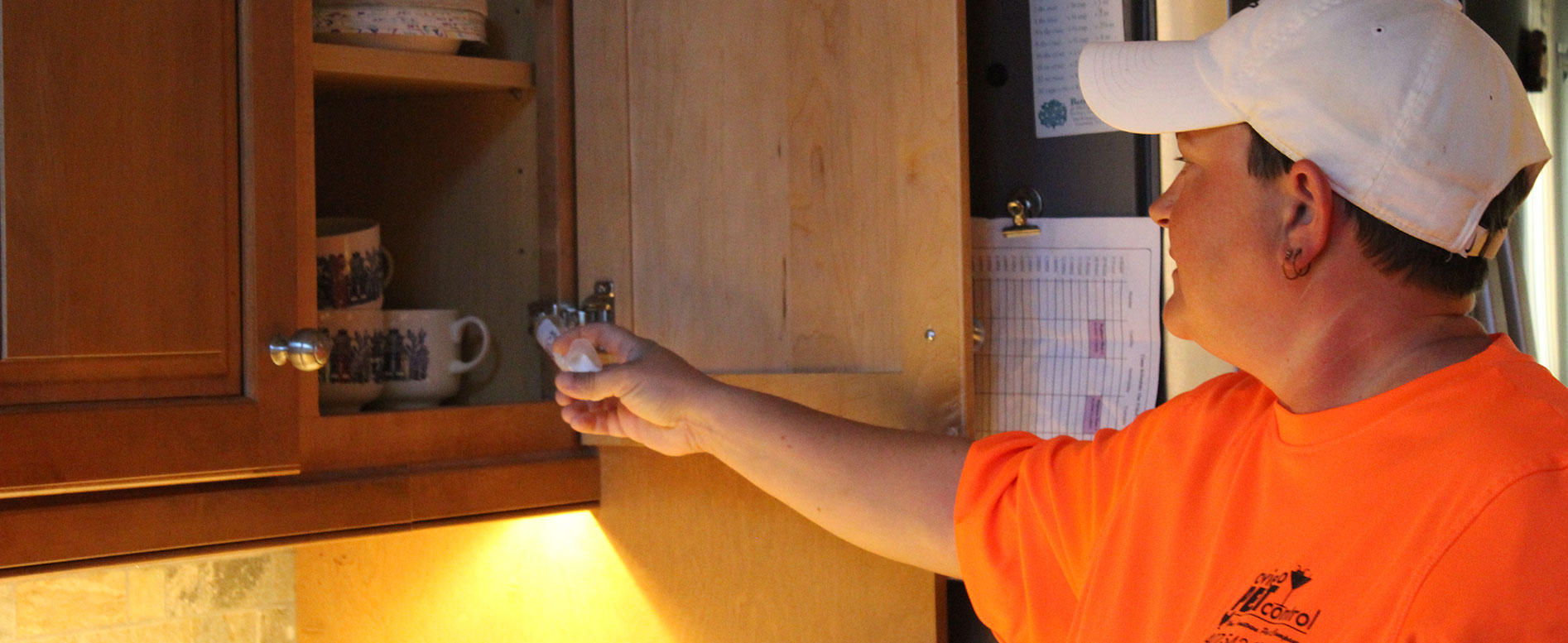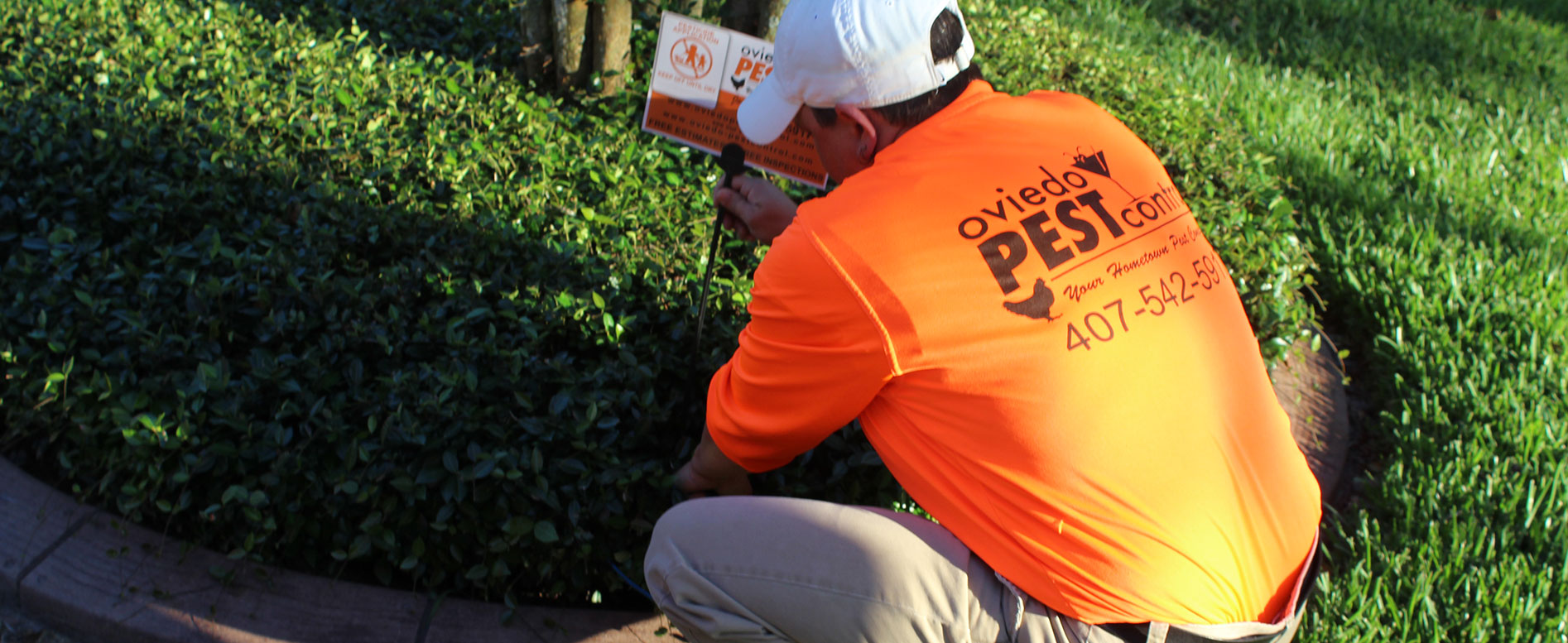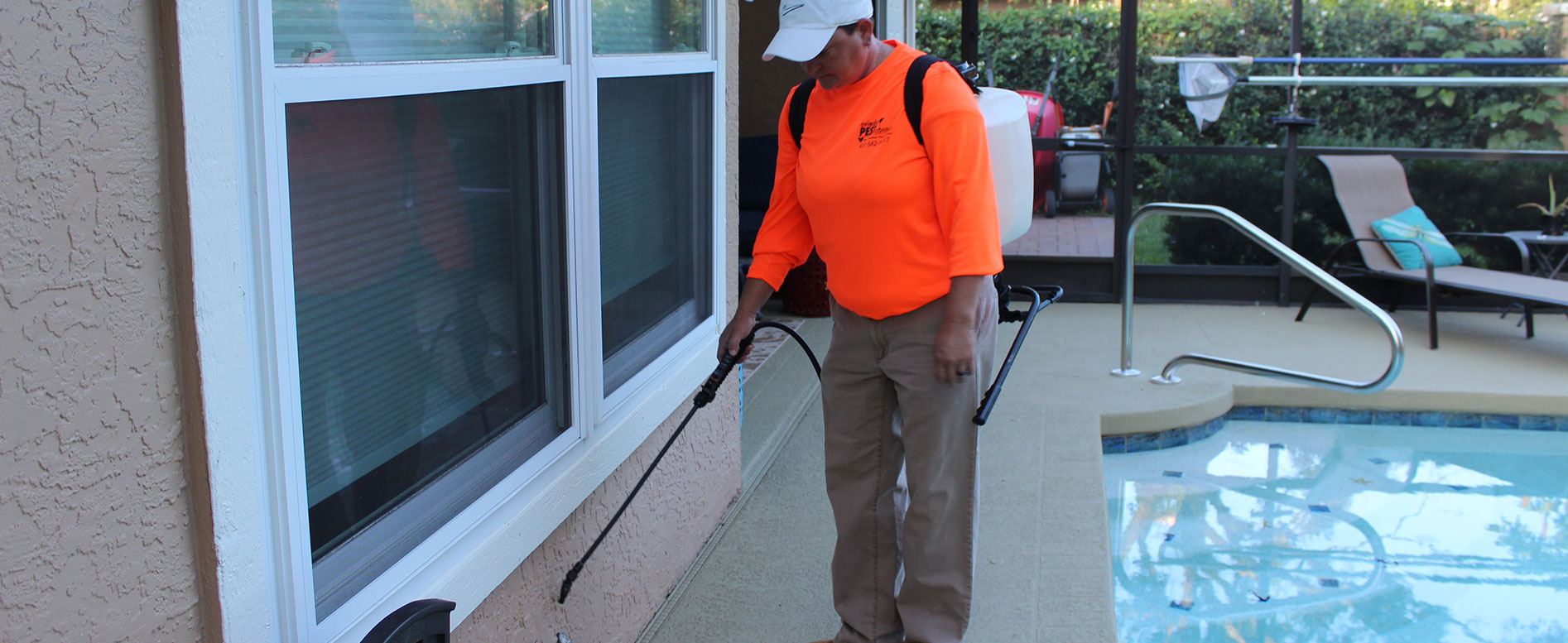Learn about us
Using Oviedo Pest Control to Protect Your Home is Always Easy.
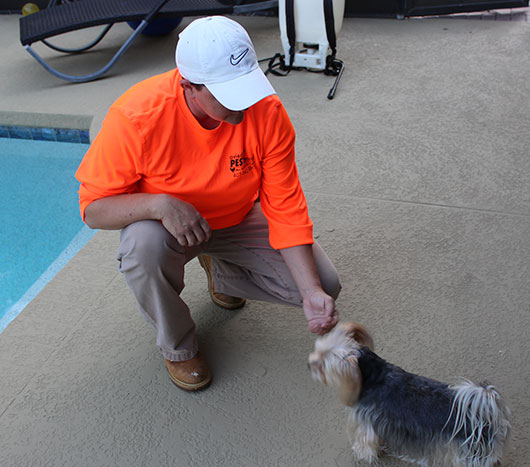
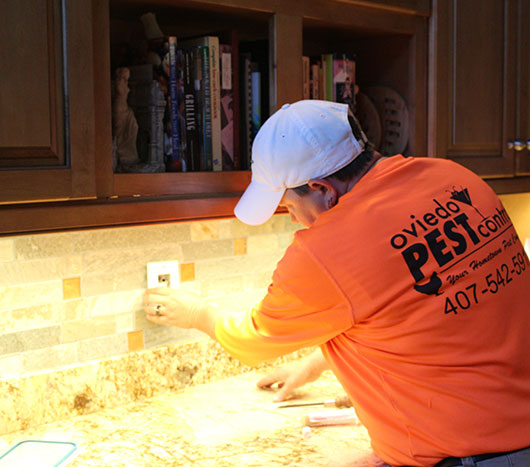
Our Services
What we do.
At Oviedo Pest Control, we provide pest control/maintenance for native pests, rodent exclusions including mice, rats, squirrels, raccoons, termite inspections, termite treatments. We also provide terminte monitoring and bait stations.
We also do pressure washing. Call for more details.
Helping You Every Step of the Way.
Click on this video to check how we
work with Our Clients
Ants
While these ants prefer to reside in moist or hollow wood, they do not actually eat wood. Black carpenter ants can be winged and are often mistaken for termites.
Odorous house ants are also known as pavement or sugar ants. They are native to North America and can be brown or black. They are often attracted to food inside your home or at a picnic!
Pharaoh ants are present all over the world except for Antarctica. They are aggressive chewers, known to chew those all sorts off textiles including rubber.
CockRoaches
Also known as the water bug, American cockroaches are often mistaken with Palmetto bugs. They are some of the world’s largest cockroaches and can fly, often right at you when you are trying to run away!
The Florida Woods Cockroach is what is most commonly referred to as a Palmetto bug. They are smaller than their American counterparts and can spray a stinky secretion if frightened.
German cockroaches are extremely intolerant to cold temperatures and are almost always found indoors. They can be tricky to get rid of as they can go from egg to mature adult in less than 60 days.
These cockroaches are often confused with German cockroaches but they prefer to live outdoors in moist places such as under mulch or rocks and around bushes.
Bees and Wasps
Almost all bees and wasps use pheromones to communicate with the hive. If they feel that the hive is threatened, they release an attack pheromone which quickly signals the rest of the hive to attack. It is always best to stay away from large hives!
The bald faced hornet is actually a type of yellow jacket wasp that provides some benefit to the ecosystem by consuming flies and spiders but can be aggressive stingers when threatened.
Bees are all important pollinators and have been declining in numbers over the past few decades. Bumblebees do not tend to be aggressive but can use their stinger multiple times.
Coveted for their production of honey and wax used in items such as lip balm and soap, honey bees stingers are barbed and contain venom. The stinger can only be used once and the bee dies afterward.
Carpenter bees are often confused with bumblebees. These guys have a shiny belly! Unlike most other bees species, carpenter bees tend to be solitary or will hive in mother/ daughter hives only..
Also known as dirt daubers, mud daubers are actually several different species of wasp that make their nests from mud. While they have stingers, they do not tend to be aggressive.
Paper wasps use fibers from wood and other plants mixed with saliva to make their nests. While they do eat flies and beetles, the can provide a painful sting is the nest is threatened.
Yellowjackets are wasps that help to control the pest populations. Only the females have stingers and those stingers can be used more than once.
Hornets are also a type of wasp closely related to the yellowjacket but are not considered environmentally beneficial which puts them in the pest category.
Beetles
Ground beetles are an assortment of over 4000 different species of beetles that exist almost everywhere in the world. They come in an assortment of sizes and colors.
Also known as a lady bug, Asian lady beetles are proficient at controlling aphid populations but can be pesky when swarming in cooler climates. They will bite if provoked.
Flies
Drain flies need semiaquatic areas, such as your bathroom sink, to live in where they consume the bacteria that flourishes in these types of environments.
Fruit flies can be extremely annoying little guys if you forget to throw out that half eaten orange but they are actually very important to scientific research
House flies have very short lifespans of 2-4 weeks but you don’t even want them in your home that long. Not only are they annoying, but they transmit food-bourne illnesses such as salmonella
Gnats are a type of fly that is known for swarming, don’t approach with your mouth open! They come in both biting and non biting varieties.
No-see-ums are biting flies that are so small that they are hard to see. Only the females bite and often causes extreme itchiness
Other Pests
Bed bugs feed on human blood and are extremely difficult to get rid of because they can go up to a year without feeding. They travel from place to place on your luggage or in your clothing
Fleas feed on the blood of their host, latching on with claws that makes them hard to get rid of and capable of transmitting diseases. They make their home on cats, dogs, humans and even your carpet.
Ticks also feed on the blood of their host and can transmit diseases. Deer ticks are known for causing Lyme’s disease
Termites are considered a very successful pest because they are prevalent in every continent on the globe except for Antarctica. There are two major types of termite living within the US. Subterranian termites form colonies that can span a large city block feeding on grass, leaves, rotting wood and tree roots. Drywood termites are known for their ability to live completely inside of wood structures such as your bedframe or posts inside of your home.
Rodents
The house mouse is the most common rodent to infest homes in the United States. They transmit disease and can cause an array of damage to your home including electrical systems
Brown rats are also know as sewer or Norway rats. They tend to enter your home in the fall and winter months as a means of keeping warm and make themselves home amongst your insulation.
